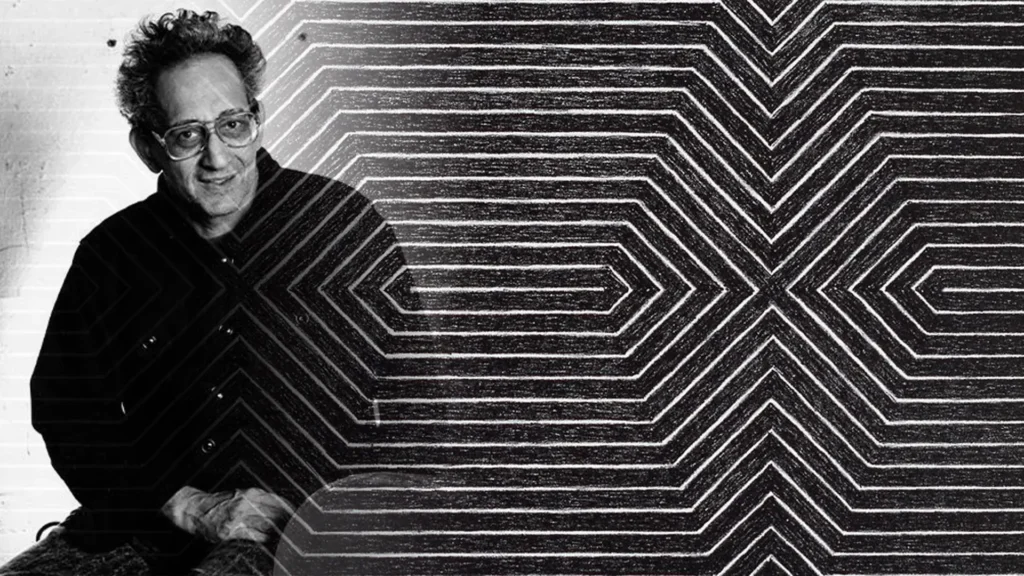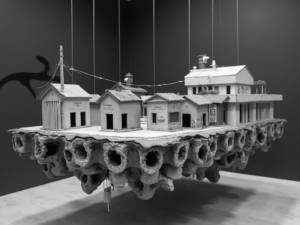Frank Stella is more than a painter; he is an artist committed to the unusual. I first encountered his work through art books and magazines, and gradually I immersed myself in the world of contemporary painting from the New York school. His figure emerged with a singular force. His name resonated in galleries and museums, and I found myself seeing him more in pictorial anthologies and through books, like one I saw in the studio of my friend, the great painter José Tejada, in Santo Domingo. He described Stella’s work in such a way that I would almost say he did it better than the books themselves. I felt there was a story worth exploring, so I decided to delve into his work and his impact on the artistic scene of the city.
Later, during one of my trips to New York, I visited MoMA, the Museum of Modern Art, where I saw his work live for the first time. Upon entering, I found myself surrounded by large canvases of vibrant colors and geometric shapes that seemed to overflow from the frame. Stella’s works were a visual feast, but what captivated me most was their audacity. In front of his “Protractor Series,” I understood that they not only challenged the conventions of pictorial art but also invited a deeper look. His use of arcs and lines generated a complexity that urged me to observe every detail.
As I walked through the room, I marveled at how Stella had pushed the boundaries of painting. His focus on form and color was revolutionary in a context dominated by minimalism. The layers of paint and the intricate combination of materials made me realize that Stella was not just creating art; he was questioning the very concept of painting. His famous mantra, “What you see is what it is,” echoed in my mind as I tried to unravel the meaning behind his choices.
Each step I took led me to a new discovery. In his “Black Series,” the use of black paint on a white background created an impressive contrast that challenged the viewer’s perception. Stella seemed to invite me to reconsider what “seeing” truly meant. The work spoke directly, stripping art of narrative and representation, focusing on pure visual experience.
As I immersed myself in his works, I felt the need to learn more about the man behind them. Frank Stella was not only a pioneer in painting; he also played a fundamental role in the development of art in New York. Born in Massachusetts, his move to the city in the late 1950s coincided with a period of artistic fervor. Stella was one of the voices that helped define that era.
What impressed me most about Stella was his ability to reinvent himself throughout his career. As art evolved, so did he, exploring various media such as sculpture and installation. This versatility not only showcases his talent but also reflects his desire to experiment and push the boundaries of what art can be.
Upon leaving the museum, I couldn’t stop thinking about Frank Stella’s legacy. His influence on contemporary art is undeniable; he has inspired countless artists to question the relationship between form and content. In a world that often seeks complex narratives, Stella reminds us of the beauty of simplicity and the power of the visual.
As I walked through the streets of New York, I felt that the city itself was a canvas where Stella’s influence remained alive. His legacy is felt not only in galleries but also in every corner where art defies expectations. Through his work, Frank Stella has left an indelible mark on the heart of New York’s artistic scene, and his creative journey continues to inspire new generations to explore and discover what art can be.









